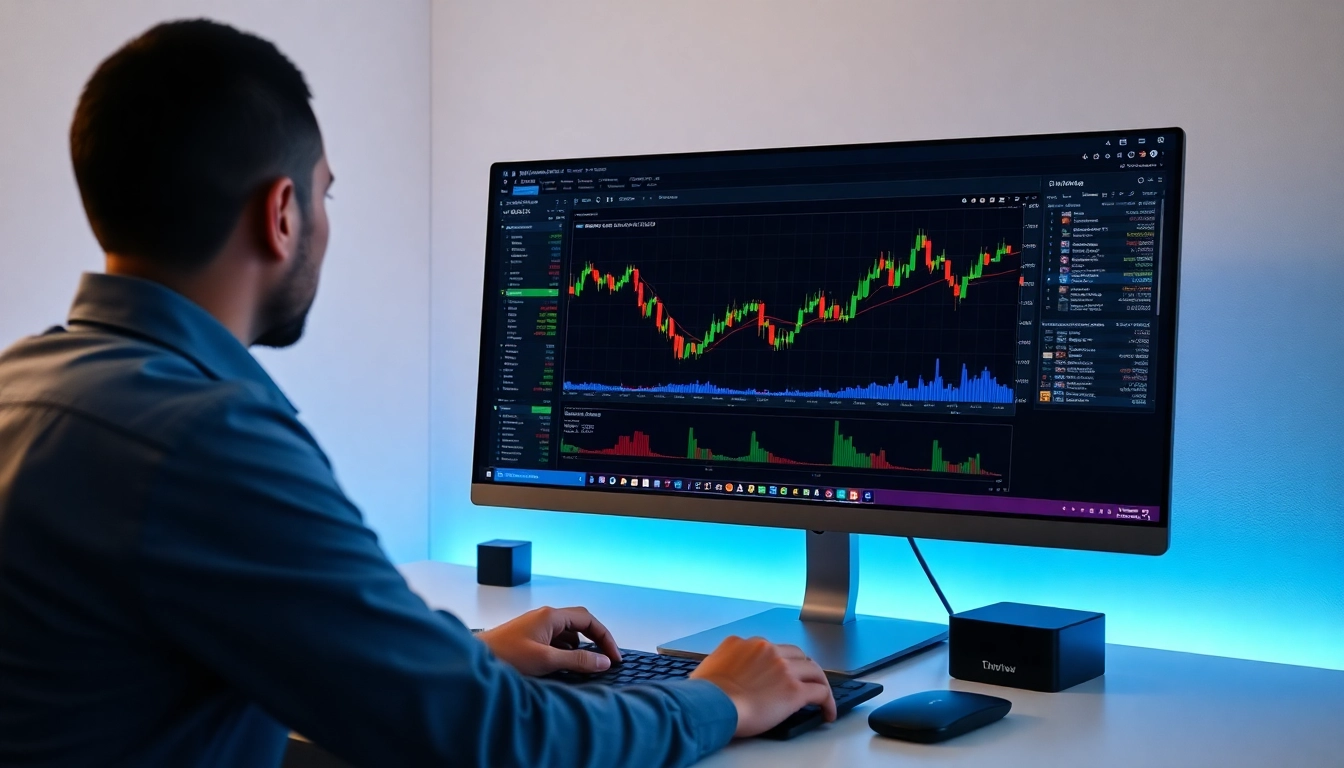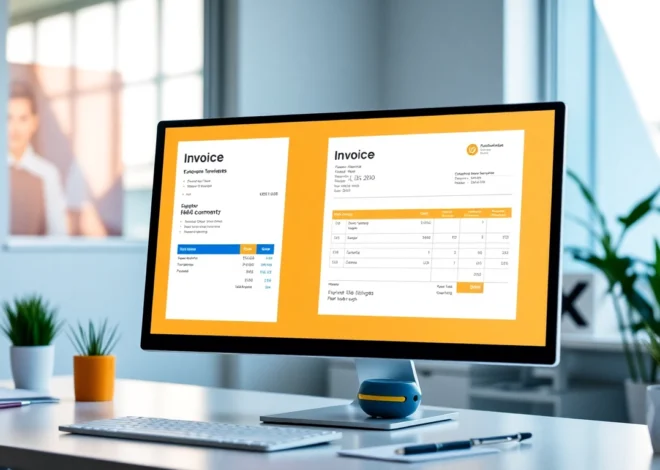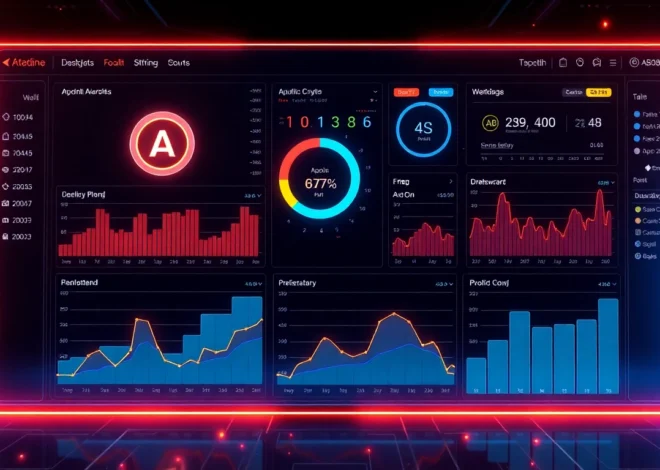
Master Trading View: Advanced Strategies to Elevate Your Market Analysis
Mastering Market Analysis with Trading View: An In-Depth Guide for Traders
Introduction to Trading View and Its Core Features
In today’s fast-paced financial markets, having access to reliable, comprehensive, and user-friendly charting tools is essential for traders and investors aiming to make informed decisions. Trading View has emerged as a leading platform that combines advanced charting capabilities, social networking, and real-time market data into a single, intuitive environment. Whether you’re a beginner or an experienced trader, understanding how to leverage trading view effectively can significantly enhance your market analysis, timing, and overall trading performance.
Trading View’s reputation stems from its versatility, offering everything from real-time charts and customizable alerts to a vibrant community of market enthusiasts sharing ideas and strategies. This platform is not merely a charting tool but a comprehensive ecosystem designed to cater to the diverse needs of modern traders, making it an indispensable component of any trader’s toolkit.
What is Trading View and How It Benefits Traders
Trading View is a web-based financial analysis platform that provides traders access to broad market data, advanced visualization tools, and social features. It was created to democratize market insights by enabling users worldwide to analyze, discuss, and execute trades efficiently. Its cloud-based nature ensures that users can access their setups from any device, fostering flexibility and continuous engagement.
The platform benefits traders by offering a unified space where they can conduct technical analysis, share ideas, and stay updated on market developments. Its powerful collaboration features facilitate learning from the global trading community, ultimately helping traders refine their strategies and avoid common pitfalls.
Key Features of Trading View: Charts, Alerts, and Community
Central to Trading View’s appeal are its dynamic charts, which support a multitude of indicators, drawing tools, and timeframes. Users can tailor their interfaces with customizable layouts, save favorite setups, and switch seamlessly between different assets and markets. Alerts notify traders instantly of significant price movements or technical triggers, ensuring timely decision-making.
Beyond its technical capabilities, Trading View fosters a vibrant community where traders share ideas, post analysis, and discuss market trends. The social aspect amplifies learning opportunities, providing insights that can complement individual analysis and help identify emerging market opportunities.
Understanding Trading View’s Interface and Customization Options
Trading View’s interface is designed for simplicity and efficiency. Its modular layout allows traders to arrange multiple charts, commentary windows, and watchlists according to personal preferences. Customization options include selecting preferred indicators, creating custom scripts using Pine Script, and setting personalized alerts. These features enable traders to create a tailored environment that enhances workflow and facilitates quicker analyses.
The platform’s intuitive design allows both novices and experts to navigate features with ease, making complex analysis accessible. Mastery of these customization options can lead to more precise visualizations and faster reaction times, critical factors in successful trading.
Effective Techniques for Using Trading View Charts
Reading Market Data with Trading View Charts
Effectively reading market data using Trading View charts requires understanding price action, volume, and trend patterns. Traders should start by choosing suitable chart types—candlestick, bar, or line charts—based on their analysis style. Reading candlestick formations like dojis, engulfing patterns, or pin bars helps identify potential reversals or continuations.
Additionally, analyzing volume spikes in conjunction with price movements can confirm the strength of a trend. The platform facilitates this by overlaying volume bars, enabling traders to discern whether a move is supported by significant market participation. Combining these visual cues with broader market context yields more accurate insights.
Technical Analysis Tools and Indicators Integration
Trading View’s extensive suite of technical analysis tools empowers traders to develop robust trading strategies. Users can add moving averages (EMA, SMA), RSI, MACD, Bollinger Bands, Fibonacci retracements, and many more indicators. The ability to layer multiple indicators allows for detailed analysis and signal confirmation.
Creating custom indicators using Pine Script enhances analytical flexibility. For instance, traders can develop bespoke oscillators or alert conditions tailored to their trading plans. Once configured, these tools can automatically generate buy or sell signals, reducing emotional bias and human error.
Setting Up and Managing Watchlists for Better Trading Decisions
Effective use of watchlists helps traders monitor multiple assets simultaneously, ensuring they never miss critical market moves. Trading View allows users to create, customize, and organize watchlists by asset class, market sector, or strategic importance. Alerts can be set on particular instruments within watchlists, providing real-time notifications on price levels or indicator conditions.
Regular review of watchlists, combined with detailed analysis of selected assets, enables traders to identify emerging trends and opportunities more efficiently. Tailoring watchlists to current market conditions ensures focus remains on the most relevant trading opportunities.
Strategies to Maximize Trading View for Market Insights
Utilizing Alerts and Notifications for Timely Actions
Setting strategic alerts is crucial for capitalizing on market movements without constantly monitoring the charts. Trading View’s alert system can notify traders of crossing prices, indicator levels, or pattern formations. For example, an alert on a breakout above resistance can prompt an immediate trade execution, capitalizing on momentum.
Combining multiple alerts—such as trend line breakouts, volume surges, and indicator divergences—can refine entry and exit points, increasing the probability of successful trades.
Leveraging Social Features and Community Insights
One of Trading View’s standout features is its active community of traders sharing ideas, scripts, and analysis. Engaging with this community provides fresh perspectives and validation for trading setups. By following top traders, participating in discussions, and analyzing shared charts, traders can enhance their understanding of market sentiment and refine their strategies.
Additionally, community-shared scripts and indicators can provide innovative analytical tools that may not be available out of the box.
Backtesting Strategies with Trading View’s Simulation Tools
Backtesting is essential for verifying the robustness of trading strategies before risking real capital. Trading View offers built-in backtesting features within its charting environment, allowing traders to simulate trades based on historical data. This process helps identify the efficacy of specific indicators, setups, and risk management rules.
By iterating through different parameters and analyzing performance metrics such as profitability, drawdown, and win rate, traders can optimize their strategies for live trading.
Advanced Tips for Expert Traders
Integrating Multiple Indicators for Precise Analysis
Advanced traders often combine several indicators to confirm trade signals and improve accuracy. For instance, using RSI divergence alongside Fibonacci retracements might provide stronger entry points. Effective integration involves understanding indicator correlations and avoiding analysis paralysis from conflicting signals.
Crafting custom scripts to automate complex multi-indicator setups can further streamline this process, offering more consistent results.
Using Trading View for Automated Trading and Bots
While Trading View itself does not execute trades directly, it supports integration with external trading platforms and execution bots through webhook alerts and third-party services. Traders can automate their strategies by configuring alerts that trigger trading bots or APIs, enabling faster reaction times and consistent execution.
This automation reduces emotional trading and allows scaling of operations beyond manual analysis.
Optimizing Performance and Saving Custom Layouts
As traders develop complex analytical setups, optimizing platform performance becomes crucial. Clearing unused indicators, limiting open charts, and organizing layouts improve responsiveness. Saving custom workspaces ensures access to preferred configurations, reducing setup time and increasing focus.
Regularly updating and backing up layouts and scripts preserves valuable customizations and enhances overall efficiency.
Measuring Trading View’s Impact on Your Trading Success
Tracking Key Performance Metrics
To evaluate the effectiveness of using Trading View, traders should monitor performance metrics such as win rate, average profit/loss, risk-reward ratio, and drawdowns. Historical performance analysis through backtesting results and real trading outcomes helps identify areas for improvement.
Incorporating journal entries and notes within Trading View’s comment features can also aid in subjective evaluation.
Adjusting Strategies Based on Data and Trends
Continuous improvement involves adapting strategies based on evolving market conditions and performance data. Analyzing historical logs, indicator effectiveness, and alert responses enables traders to fine-tune their setups for increased profitability and lower risk exposure.
Scaling Your Trading Operations with Trading View Integrations
As trading success grows, integrating Trading View with brokerage accounts, automation tools, and advanced analytics platforms supports scaling. API connections and webhook alerts can facilitate larger trade volumes while maintaining discipline.
Building a systematic approach rooted in Trading View analysis creates a sustainable foundation for long-term trading growth.


